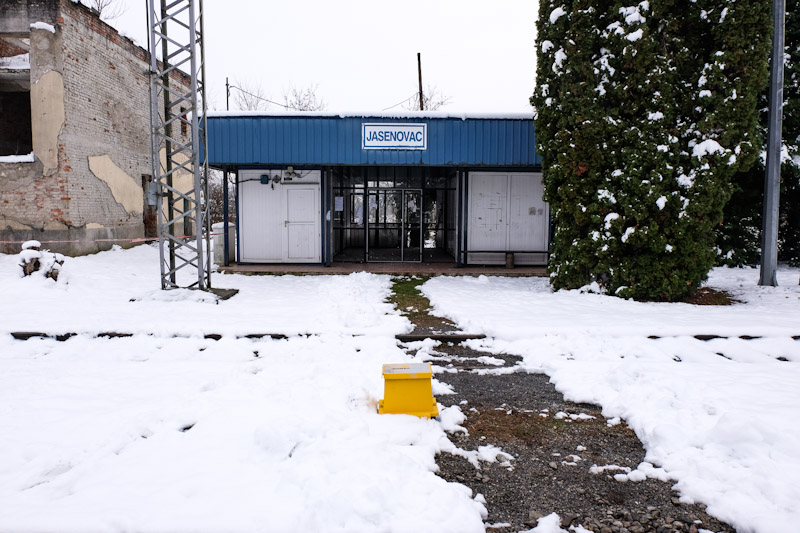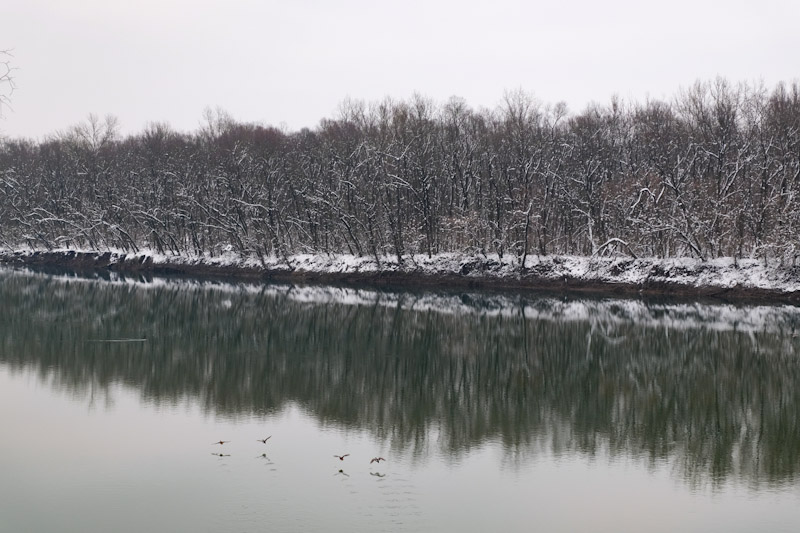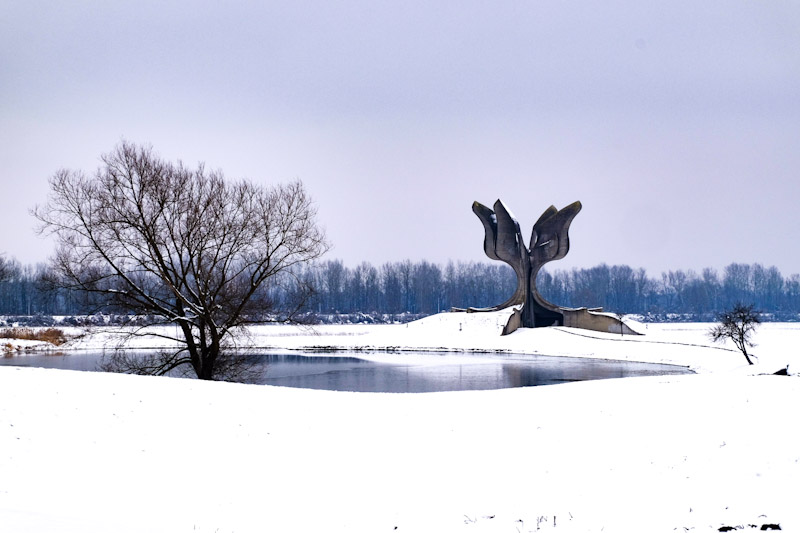We stepped off the train into a ghost town. Next to a roofless ruin of bricks covered in vines and carpeted in empty beer bottles sits the nominal Jasenovac Station, whose doors have been spray painted and locked and whose windows lay in shards of glass on the icy ground. Staring in confusion, my wife and I have no idea what happened here, but the image foreboded our visit: we were in Jasenovac to see Croatia’s largest concentration camp.
Jasenovac is reviled as one of the darkest spots in Croatia’s history. No one can pinpoint exactly how many people died here during the camp’s four-year reign, but the modern consensus falls between 80,000 and 100,000, including 13,000 Jews and 20,000 children. Most victims were Serbian — a reminder that the widespread terror, which extended to Africa, Asia and the Balkans, ignited regionally specific crimes against humanity in every country.
Here, in this rural corner of central Croatia hugging a bend in the Sava river, the ostensibly independent Croatian fascist government, the Ustashe, used the war as an excuse to cleanse their country of anyone who wasn’t of pure Catholic Croatian blood. Their leader, Ante Pavelić, mimicked Hitler’s ways with brutal admiration.
Jasenovac was the largest camp his regime built, strategically located near an industrial plant and a small town called Novska, where two of Croatia’s major railways intersect. My wife and I stayed in Novska at an inn called Pansion Babić. While checking in, the owner — an elderly man with little English — looked up from him computer and asked me, apropos of nothing, “Catholic?”
No, I replied.
“Ah. Protestant?”
“Jewish,” I answered, suddenly self-conscious about my admission. Omens lurked in every moment, it seemed.

We left Babić early the next morning for Jasenovac, a pleasant 10-minute train ride south. There is nothing much to see in Jasenovac between the rail station and the camp. Peeking above the low pastoral scenery we noticed the bulbous spire of the Diocese of Pakrac-Slavonia, a Serbian Orthodox church, but beelined instead to the concentration camp, crossing a wooden footbridge and a dreary concrete elementary school that sits immediately next to the camp’s museum, over the same earth where tens of thousands of people were once slaughtered.
As we approached the museum, a man emerged from one of the buildings and waved to us. “You want to go in?” he asked. “Okay, hold on, I need to turn on the lights.”
He unlocked the museum door and asked us to wait in the lobby, where I noticed the guestbook. No one had signed it in the last week. When the employee returned, he pointed out the museum’s ceiling, where, on dozens of layers of hanging glass panes, the names of thousands of camp victims were inscribed. He then instructed us to start in the room to the left, where the first objects we saw were an axe, a mallet, a hammer and a knife once used for killing prisoners.
The Ustashe were famous for not using massive gas chambers in their genocide, instead murdering by every other barbaric method: slit throats, starvation, dehydration, poison, hanging. Sometimes they would tie prisoners together with wire, slice open their guts and throw them in the Sava. (This horrific scene had the bonus consequence of contaminating the river, the inmates’ only water source for bathing and drinking.)

The conditions of Croatian camps were so bad, even Nazis were appalled. “These camps have reached the height of hideousness here in Croatia,” wrote Edmund Glaise von Horstenau, Hitler’s diplomat in Croatia. “The greatest of all evils must be Jasenovac, which no ordinary mortal can glimpse.”
None of this remains today. As the war was ending, Ustashe soldiers destroyed the barracks, torture chambers and factories, and in 1945, prisoners of war demolished the rest. Jasenovac is now nothing but a vast field next to a glassy river, a shadow of history.
During our visit in December, the sky was a cool grey. A family of ducks lifted up off the river and flew toward trees that swapped their leaves for chunks of snow. In the distance, the Stone Flower — a tall concrete memorial by renowned Serbian architect and urbanist Bogdan Bogdanović — stood powerfully still, unmovable by nature.

We walked a half-kilometre down the road to get a closer look at the monument, passing an old defunct train once used to cart prisoners to the camp. We saw a mass grave, blanketed by snow, holding thousands of buried remains. Across the river, mere metres away, we saw Bosnia and Herzegovina, where the Donja Gradina memorial commemorates the same atrocities.
We wanted to walk to the Stone Flower for a closer look, but the path was layered in ice and damp snow. Instead, we decided to simply admire it from a distance. We’d gotten close enough.









